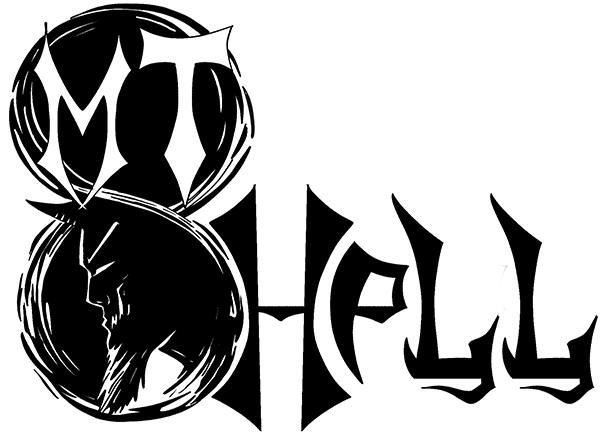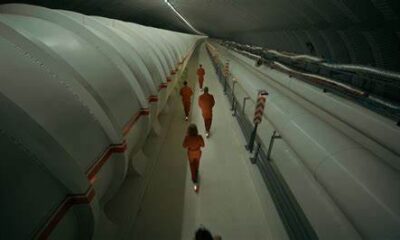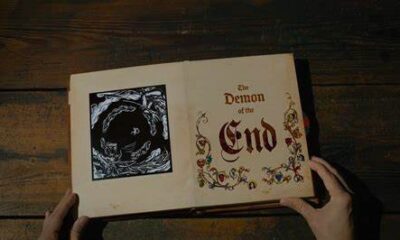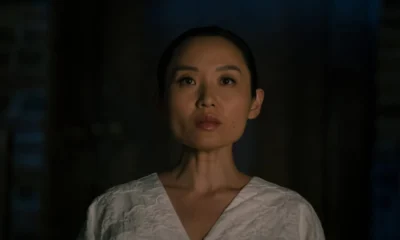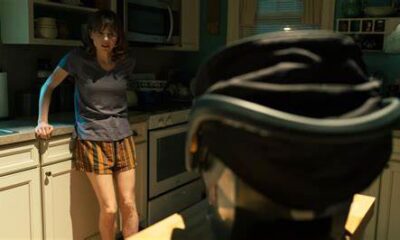
Notes from the Last Drive-In: S3E9 – Evilspeak and The Day of the Beast
Welcome back to Notes from the Last Drive-In, where we take in the message of the dark lord Satan in a double feature on our penultimate week. The first of the films is the 1981 Clint Howard classic Evilspeak, while the night rounds out with the Spanish film The Day of the Beast (1995). So how was this early Summer devil’s night on Shudder? Let’s find out together.
Evilspeak (1981)
Opening: There are really only five college movies. Every other one is a variation on a theme.
What happens when you send Clint Howard to a military academy, bully the hell out of him, and connect with Satan using an Apple II? You get 1981’s Evilspeak. This charming, incredibly goofy film is an average film for the drive-in but definitely delivers on all three Bs: blood, breasts, and beasts. The film, directed by Eric Weston and co-written by Weston and Joseph Garofalo, stars Clint Howard as Stanley Coopersmith, a downtrodden cadent who uncovers an ancient book used in a black mass ritual. Naturally, He ends up using a computer to tap into the spells within and summon Satan himself to get his revenge on those who wronged him. The film also features R. G. Armstrong, Joseph Cortese, Lenny Montana, and Don Stark.
The film is every bit as goofy as you’d expect a 1981 Satanic horror film involving computers to be. It has plenty of blood, s surprising but welcome shower scene (the other one features Clint Howard, so your mileage may vary), and a group of feral hogs, the likes of which we haven’t seen since Hogzilla. The plot is ridiculous, but that’s not necessarily a strike against the movie. Creating a ritual site of rogue former Catholics on the California coast before the Spanish missions is ridiculous but at least plausible enough to work. The strange quasi-Christian-military academy is just as odd and yet consistent a choice with the film. The film is like that the whole way through, making what might seem like strange choices in narrative, yet they just kind of work because that is the sort of film it is.
There isn’t an actor in the film that doesn’t pull their weight – there’s no bad performance in the bunch. Clint Howard sells the abused and tormented outcast well with enough hints at the menace beneath that is unveiled fully in the film’s apocalyptic climax. His transformation from prey to predator is satisfying in the scope of the narrative and performance. Meanwhile, veteran western actor R. G. Armstrong chews the scenes as Sarge, a menacing groundkeeper. Perhaps most surprising for most audiences would be Lenny Montana, best known as Luca Brasi in The Godfather, playing the cook. It is a surprising and fun turn for an actor who filled in a role of such menace in the mafia classic.
Visually speaking, for a movie with a pretty low budget, it’s quite good-looking at times, thanks to the cinematographic eye of Irv Goodnoff. There is also some fun editing by Charles Tetoni with an incredible cut between a severed head and a soccer ball. The whole movie comes together with the only loose gear coming in the form of the sometimes strange sitcom-style score by Roger Kellaway. The oddity of the music does add its own charm, of course.
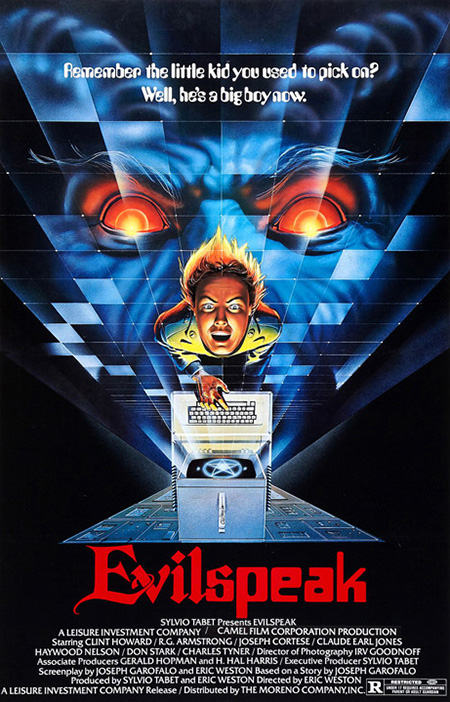
Joe Bob’s segments mostly revolved around the night’s guest, Clint Howard. Clint’s stint as a guest was fantastic, and he is certainly among the top three special appearances of the show’s history. He was affable, charming, and had some fascinating stories about his experiences in Hollywood, from Star Trek to The Andy Griffith Show, and of course, Evilspeak. One particularly fascinating factoid was the few brushes with a disaster that Clint Howard narrowly avoided, such as the usage of fuller’s earth on the set and the usage of rubber cement smoke – both hazardous substances in hindsight. That’s not even getting into the giant live pigs on set.
The host segments for the first half of the night reached their absolute peak, with a new musical number, “Clint Howard (Thank You)” by John Brennan. It was adorable and charming and even featured a surprise visit from Ron Howard.
Evilspeak is a solid drive-in film. While I disagree with Joe Bob Briggs’ four-start assessment of the movie, I think it is worth the ride. The story is pretty entertaining with enough of that 1980s style goofiness to add some unintentional laughs. It also has one Hell of a finale, pun intended. During the show, Clint Howard mentioned an interest in a follow-up or remake: I could see that happening with some significant changes, such as losing the computer used in summoning. Overall, Evilspeak is one I would watch again, so I am giving it four out of five Cthulhus.
 (4 / 5)
(4 / 5)
Best Line: “There’s my fucking crowbar!” – Sarge, upon having located his crowbar.

The Day of the Beast (1995)
Opening: Subs vs. Dubs: No longer a fight just for anime nerds.
The Day of the Beast (in Spanish, El día de la Bestia) was my favorite of the night’s films and one of the best of the season. The movie is also one of the funniest ever aired on The Last Drive-In. Directed by Álex de la Iglesia and co-written by Iglesia and Jorge Guerricaechevarría the film stars Álex Angulo, Armando De Razza, and Santiago Segura. The Day of the Beast follows a priest, Ángel, and he commits as much evil as he can to find his way into a Satanic cult, believing that the AntiChrist will be born on Christmas Eve. He is aided by heavy metal fan José and TV occultist Cavan who quickly find themselves in the center of a Satanic storm.
I cannot stress enough how funny this movie is. Humor can be extremely subjective, and this can be especially true with the language and cultural barriers. What is hilarious in one context can be puzzling in another, such as wordplay in the form of idioms. A line may be hilarious in its original language, but translating it may kill it. The Day of the Beast doesn’t seem to have these issues because the gags are seemingly universal. At one point, Joe Bob mentioned Álex Angulo has an almost Buster Keaton type physicality, and that is a perfect description. A lot of the humor is physical, broad comedy. People being hit, shot, stabbed, chasing one another through rooms, being tied up. It sounds ridiculous, but it works. The central performances are also fantastic, with the three leads forming a trio that reminded me of The Three Amigos and evoked The Three Stooges at times. The film also serves as winning satire, an incredible feat given the potential language barrier and the stick issue of religion, but it absolutely sticks the landing.
All of the story-driven humor is accomplished through great storytelling. Another insight Joe Bob Briggs brought to his read of the film, one that blew my mind when he mentioned it, is that the film is essentially a retelling of Don Quixote, that Spanish literary classic. Ángel is Quixote with José as Sancho, and the journey reflects the themes and structure of the book. It is an awe-inspiring feat. The film has so much depth I am certain I have missed many details in my initial viewing, between note-taking and live-tweeting. It is one I am going to need to watch again.
The film is also gorgeous at times, with cinematographer Flavio Martínez Labiano really making Madrid look like a dirty, sinful place, but with special effects that most definitely show their age. One particularly comical rear-projected fall evokes feelings of Mystery Science Theater 3000. The bestial, demonic Satan depiction is entertaining, but again, a bit dated now, at least given the effects. For the time, though? Impressive. The gore is a bit limited as well, but it works, such as an incident involving a shotgun and an ear.
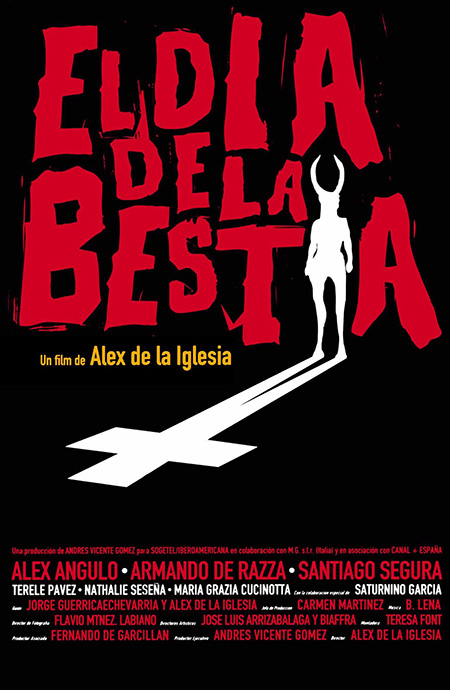
Joe Bob’s insights were great and layered in some solid social commentary and a little history – such as how the movie would fit into the history of the Spanish missionary wave in California. One of the more fun moments was him talking about his own time in Spain in his youth. College Joe Bob seemed super fun. What the heck happened? Hearing about the works of a director that I had not seen before was very fun and part of why I enjoy having Joe Bob pop up during the movies. I came out of The Day of the Beast with another five movies to watch.
The back half of the night had what I would argue to be the superior film. I’ve been poking fun at Joe Bob throughout the season for being a bit generous with his ratings, but I found it unfortunate that the superior of the two films, The Day of the Beast, only took three stars. I’m not in agreement, I think The Day of the Beast is a tremendously funny horror film, and I give it four and a half out of five Cthulhus. It’s just so damn good.
 (4.5 / 5)
(4.5 / 5)
Best Line: “You must help me contact the devil.” – Father Ángel, spoken like a true man of God.
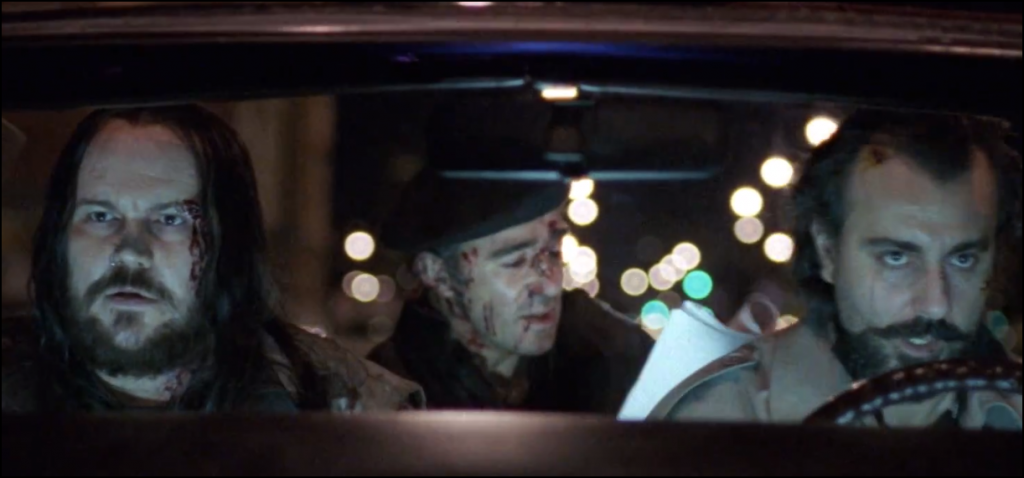
Haunted MTL Drive-In Totals
As always, here are the official totals provided by the show.
As for our own totals…
- 10 dead dogs this season
- 2 Yuki Sightings
- 250 Clint Howard movies
- 24-hour shoot for floating Coopersmith
- A Dozen Hogs
- John Brennan Musical Number
- Gratuitous Public Access Occultism
- Surprise Opie
- Buddhist Joking
- Farmer Joking
- Foot Crosses
- Burning Crosses
- Falling Crosses
- Digital Devilry
- Swine Fu
- Tron Fu
- E S T E B A N
- Darcy Cosplays: Ms. Heavy Artillery and Devil’s Night Darcy
- Silver Bolo Award: Bloodbath and Beyond
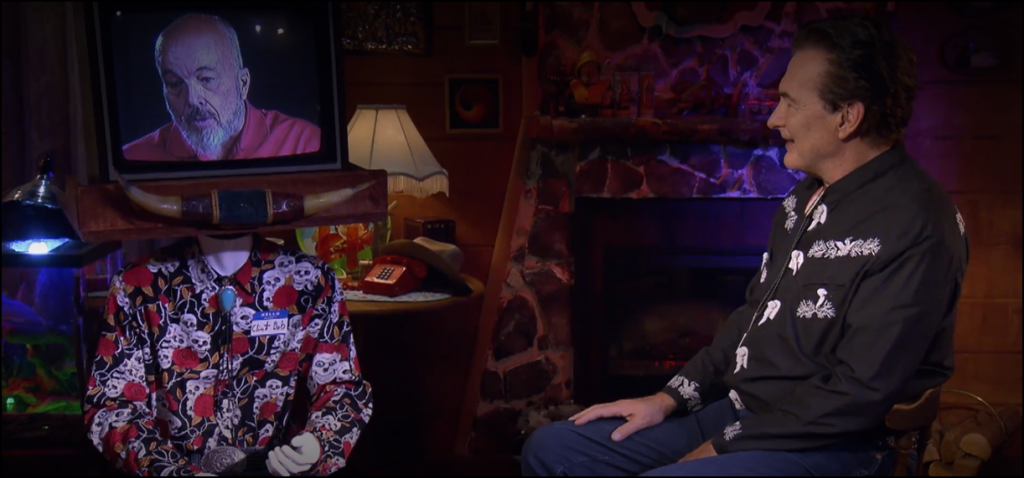
Episode Score
It was another fine night at the drive-in. I appreciate the show because I end up having a great time from week to week, even if the movies were awful. Such is the case with last week’s offerings, yet the whole night ended up being a blast. Sometimes I worry the reviews sound the same week to week because of this. It’s all Joe Bob’s fault for having such a remarkably consistent show.
It’s gonna be a bummer of a couple of months until we get our next, inevitable mini-marathon.
 (4 / 5)
(4 / 5)
Join us this Friday on Twitter as we live-tweet the season finale. Will we finally get Halloween III? Probably not! I bet that one of the movies will be Another WolfCop. Will it be fun? Most certainly!
Movies n TV
Wheel of Time A Question of Crimson Is a Political Espionage Delight
Episode two of Wheel of Time felt like the beginning of a long journey. Stories are unfolding, lives are changing, and blood is spilling.
Let’s discuss.
The story
We begin this episode in the past with Elayne’s mother, Queen Morgase. It turns out her rise to the throne was a bit, shall we say, cutthroat. So when she shows up at the White Tower, Siuan is concerned.
She might have reason to be, too.
Meanwhile, Rand, Egwene, Moiraine, Lan and Aviendha are in the Spine of The World. As they travel through some of the most breathtaking lands I have ever seen on a TV show, Egwene is plagued with nightmares. We think at first that’s just her trauma working itself through her system. But we soon find out that it might not be that straightforward.
Finally, Perrin returns home to heal after his hand is almost cut in half. But when he gets there he finds the town has been infested by Children of The Light. And they’re looking for him.
What worked
There was something heartwarming in this episode about political espionage and choking religious persecution. And that is Elayne’s relationship with her family.
I have consumed a lot of fantasy content with royal families. And I have never once heard a princess call her mother ‘Mum’. I’ve never seen royal siblings get along. And I have sure as hell never seen a princess have a good relationship with her step-parent.
This was refreshing. Even though Queen Morgase is kind of a horrible person she seems like a good mother. And that’s an unexpected delight.
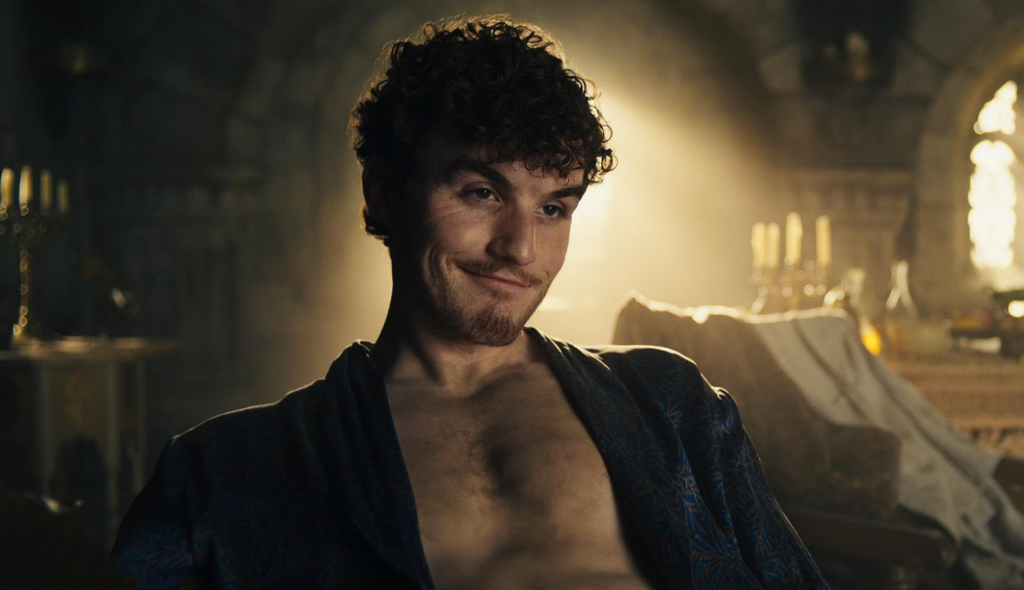
Of course, this is just one storyline among many. And while this can sometimes be overwhelming, in this case it wasn’t.
I’ll be honest, some of these storylines are going to drag for me. I know this because I’ve read some of the Wheel of Time books and I have an idea that not all the characters exactly pique my interest.
No one likes all the characters. No one likes all the storylines. While I am here for the political espionage between Queen Morgase and Siuan, not everyone likes it. While others might be fascinated with Selene trying to win Rand back, I couldn’t care less.
Having multiple storylines keeps everyone’s attention better. So long as things don’t get out of hand. Things can easily get out of hand. But this seems to be managed well.
So far.
What didn’t work
As I mentioned above, I’m not thrilled with Rand’s story at this point. And while it’s fine to not like a storyline when there are this many to choose from, it’s not fantastic that the one I like the least is the one involving our two main characters. And anytime we were with the team at the Spine of The World, the only thing that brought me joy was Moirain’s hat. It reminded me of Stockard Channing’s hat in Practical Magic.
The problem is that Rand is Charlie Brown with controversial magical powers. He is boring, serious, and pessimistic.
And yes, I understand that he has a heavy emotional burden and he’s the Dragon Reborn and that’s quite taxing and all. But let’s be fair, there isn’t a single person in this show that doesn’t have a heavy burden. And most of them manage to be fun occasionally.
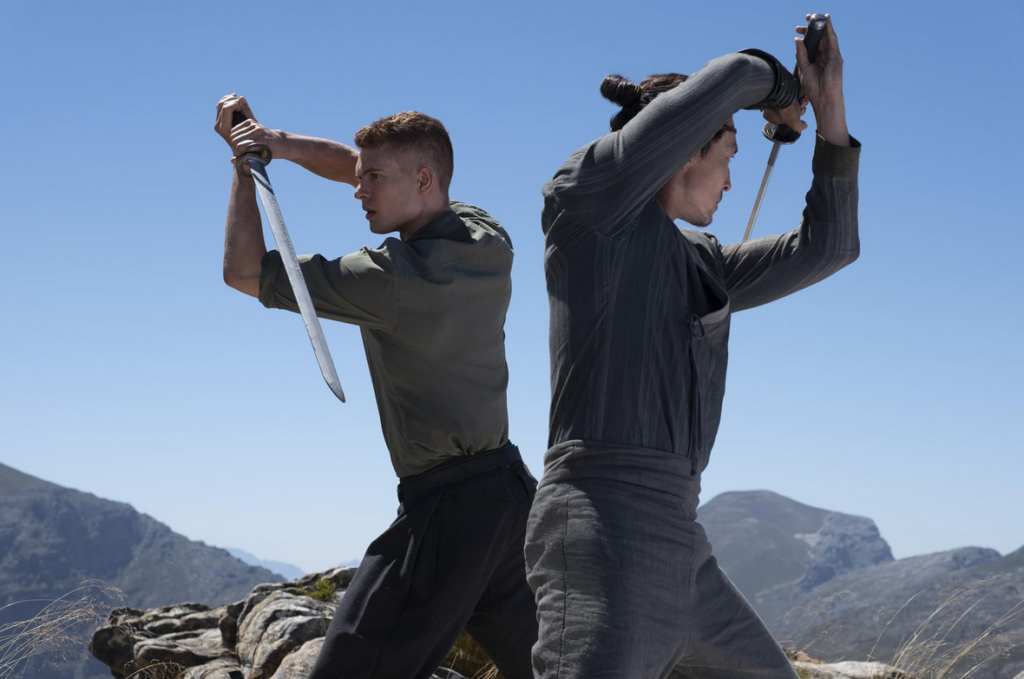
All that being said, this episode of Wheel of Time did exactly what it needed to do. It set up conflicts at each of the three locations. It established emotional ties between the characters and the events. And it established goals for everyone.
This was, in short, a solid episode. Not groundbreaking, not mind-blowing or life changing. It was simply good. It was entertaining and moved the plot forward.
Well done.
 (3.5 / 5)
(3.5 / 5)
Movies n TV
Wheel of Time Returns With A Bang
Wheel of Time is back for season three. There are mixed feelings regarding this. Last season, there were some serious pacing issues. And some serious sticking to the book’s storyline issues. But we’re two seasons in, and we don’t give up so easily. So let’s dive into episode one, To Race the Shadow.
By the way, I highly recommend watching this episode with the subtitles on. You’ll see why.
The story
We begin this episode with Liandrin facing a trial of sorts for her rampant betrayal. She does her best to gaslight her Aes Sedai sisters into thinking that Siuan Sanche is the real traitor.
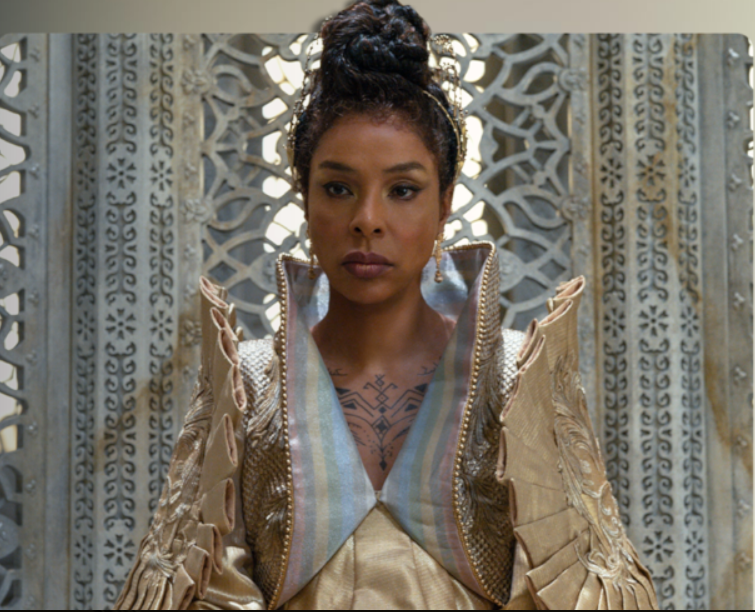
When that doesn’t work, she reveals how many Black Aes Sedai have actually infiltrated the tower.
Spoiler, it’s a lot.
In the aftermath, our whole team gathers to drink and enjoy one night of relaxation before they head out to the Tear to form an army for Rand. All is going well until they’re attacked by myriad creatures and a sentient axe.
What worked
This episode was long. It had a run time of an hour and eleven minutes. And a lot of that run time was spent in heavy dialog scenes.
Fortunately, these were well-done scenes.
If you’re going to have a lot of talking scenes, there are good ways and bad ways to do it. Last season, we saw lots of examples of the bad way to do it. But this episode did it well. For one thing, other things were going on while conversations were taking place. The characters are drinking, playing games, walking through an interesting city. And the scenes themselves didn’t stretch out. They weren’t repetitive. We heard what the character had to say, then we moved on.
It was also nice that the point of these scenes wasn’t just info dumps. We had character development. We had romantic interactions. We had plot development and foreshadowing.
Overall, this episode felt like what it was. A moment of calm before a storm.
Taking a step back, I’d be remiss if I didn’t address the fight scene at the start of the episode. Because it was epic.
The magic looked amazing. The martial arts that went along with it looked fantastic. The costumes were beautiful. It was just incredibly fun to watch.
More than that, it was emotional. We lost some characters in that fight that were important. And it was clearly emotionally shattering for many of our characters, who found themselves betrayed by people they trusted.
So many of them.
It was a great way to open the season.
What didn’t work
Despite that, this episode wasn’t without its flaws.
First off, there were a lot of dialog scenes. And they were good scenes, as I’ve already discussed. But it was one after another after another. And when your episode is, again, an hour and eleven minutes, it’s maybe a little much to have so much chit-chat. Couldn’t some of these conversations, important as they were, have been moved to maybe another episode?
Finally, I want to talk about Egwene’s travel through the arches.
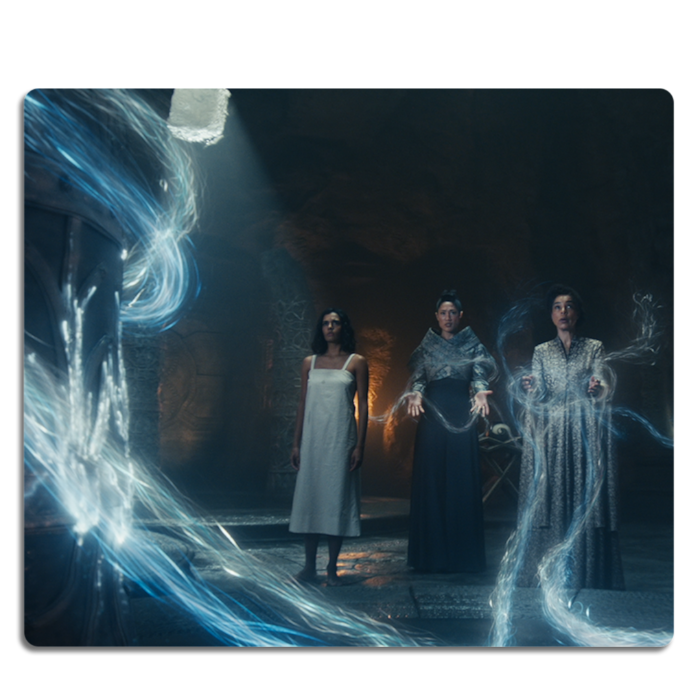
I feel like maybe there were some deleted scenes here. Because there must have been more to that visit than what we saw, right?
We could have seen Egwene battle Rand. That would have been badass and emotionally devastating. We could have seen her with a quiet life with Rand back home at the Two Rivers. We could have seen anything except for the quick clip of Rand in a bloody river, followed by Egwene being shoved back out in a bloody shift.
No products found.
Bad job. But at least it wasn’t an extended scene of Moiraine collecting bathwater, and then taking a bath while looking sad. If we’d started this season with another scene like that, it might have broken my brain.
Amazon dropped the first three episodes at once. So we’ll be back soon to talk about episode two. See you then.
 (4 / 5)
(4 / 5)
Movies n TV
Entertaining as hell: Eight Legged Freaks (2002) Review
Early 2000s is a special era for the industry. It accepts the cheesiness and corniness of movie making, in turn producing some gems in their own right. Eight Legged Freaks starring David Arquette and young Scarlet Johanson is a horror comedy about giant spiders who overtake a small town. As crazy as that premise sounds, the movie surprisingly has a ton of heart and is super entertaining. Let’s review, shall we?
Plot
We start Eight Legged Freaks with a shot of toxic waste spilling into the water supply of Joshua, a spider farm owner. He is friends with Mike, one of our protagonists, who is a science geek and a spider enthusiast. Mike notices something quite right upon visiting Joshua, but no one takes him seriously. We are then introduced to the rest of the crew. Mike’s mother Samantha, the town sheriff, is too busy chasing Ashley, his sister, who is dating the town mayor’s son Bret (something Samantha does not approve of). We also have Chris, who returns to the town to save his father’s legacy in the town mines. He has opposition from Wade, Bret’s father, who wants to use the mines for his business ventures. Lots of drama going on that will only get juicier once the spiders get loose.
The creepy crawlies quickly dispose of Joshua and make their grand appearance after Ashley rejects Bret’s advances, abandoning him in the middle of a desert. A glorious chase sequence ensues as the spiders make their way towards the town, wreaking havoc on its residents. In a true horror fashion (which the movie acknowledges), it takes some convincing from Mike and then from Samantha for the town to take the threat seriously. The tongue-in-cheek style of narrative adds the comedy aspect to a movie that would otherwise burn out fairly quickly.
The remaining characters hide out in a shopping mall as it’s the only somewhat sturdy building in the area. This doesn’t last long as the spiders break in, forcing them to run through the mines. Their resources to fight the creepy crawlies off are limited as the methane gas doesn’t allow them to use firearms. Such conditions require resourceful thinking from Chris, who uses perfume to fend off the leader of the spider group and save himself during the climax of the movie.
Character dynamics are not forgotten once the action kicks in. We have Chris confessing his long-term feelings for Samantha which she knew all along, which provided some comedic relief. Bret also reunites with Ashley and apologises for being an asshole. Mike finally gets the appreciation he deserves as his knowledge saves the townsfolk more than once during the whole ordeal.
We end the movie with the town’s radio show person telling the story as an urban legend during his segment. This brings it into question – how much of it happened the way he said it did? We can only guess…
Overall thoughts
Eight Legged Freaks is a fun creature feature with some self-aware commentary on genre tropes that doesn’t take itself too seriously. The acting is good, the pacing fitting and the characters are likeable enough for you to want them to make it through. Definitely a must watch, if you don’t suffer from arachnophobia, that is.
 (5 / 5)
(5 / 5)
- What do you get when you cross toxic waste with a bunch of exotic spiders? Eaten! The townies of Prosperity, Arizona will all become a screaming smorgasbord if mutated arachnids as big as SUVs have their way in this comedy/horror crowd pleaser whose creators include the producers of Independence Day and Godzilla
- Spiders that leap like gazelles, web-spitting spiders, spiders that suck your insides out as if through a straw—they’re all among the behemoths conjured up by an inventive effects team
- David Arquette (Scream) leads the two-legged stars, mobilizing the citizenry in a last-ditch fight to survive
Last update on 2025-03-10 / Affiliate links / Images from Amazon Product Advertising API

